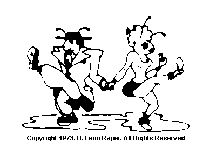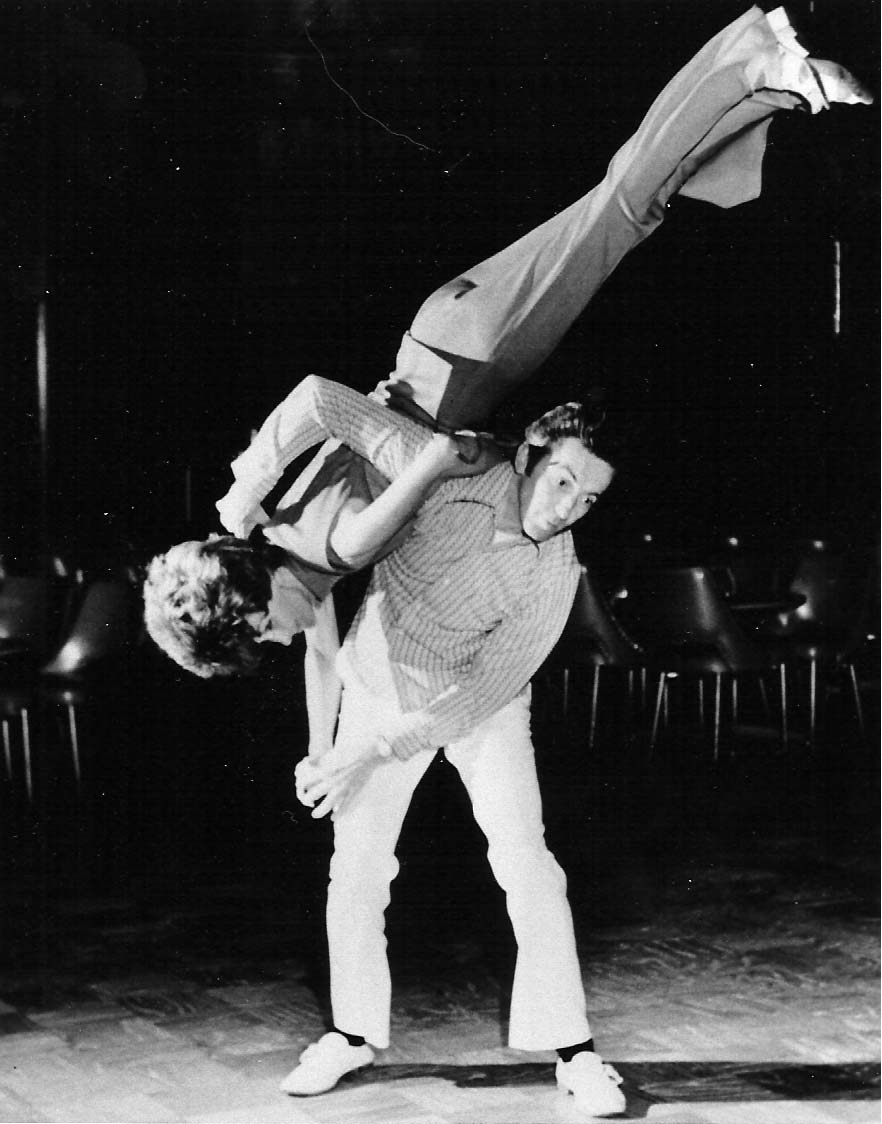|
Raper's
|
[Raper's Dance Classes] [Dance Teachers Corner] [Visitor Feedback]
Raper's|
Favorite Dance Sites
NightClubSwingDance.com
DanceCorner.com
Balboa Dance Corner
Ballroom Dance Corner
Charleston Dance Corner
Lindy Hop Dance Corner
Shag Dance Corner
Swing Dance Corner
CWDance.com
DanceDictionary.com
Who's Who in Swing Dance
WorldDanceInfo.com
MastersOfSwingDance.com
Starting A New Dance Club
(Helpful Hints)
Swing Dance
Country Western Dance
Competition Judging
Other Dance Links
Educational References
Dance Instruction
Clubs, Associations, Etc.
Music
Dance Videos
Movies & TV
Dance Therapy
Other Web Sites
H. Leon Raper
Swing Dance
FAQ
(Frequently Asked Questions)
By: H. Leon Raper
I am constantly receiving E-mail from high school and college students doing research into the history of swing music and swing dance. I hope this FAQ file will assist them with their task. Good luck and I hope you enjoy your trip through a wonderful world of dance. I also hope the experience enhances your life as much as it has mine.
- Why the resurgence in Swing Dancing?
- How can adults help kids who want to dance?
- Why should we help kids learn to dance?
- Swing Dance References Sources
Why the resurgence in Swing Dancing?
All the elements exist today that are necessary to bring on a new dance craze throughout the world. There are the movie, music, funky clothes, places to learn and places to dance and new TV commercials featuring swing dancing. Some of the details are as follows:
1. Their was the movie "Swing Kids" which came out in 1993. The movie was based on actual happenings in Germany during World War II when the German government wouldn't let the people listen or dance to music from the U.S. This was during a time when swing music was extremely popular throughout the world. The young people loved swing music and dancing. Many of them rebelled and organized swing dances using the currently popular swing music. They tried to keep their dances hidden from the Third Reich, but were unsuccessful many times.
2. The young people of today love the new bands and swing music arrangements. New bands breaking out are Big Bad Voo Doo Daddy, Cherry Poppin Daddy's, Royal Crown Review, Biran Setzer Orchestra, and many others.
3. There are the funky clothes that the young people like. Sales are big at all the vintage clothes stores throughout the world. The guys like to get dressed up in wing tipped shoes or penny loafers, baggy pants, nicely ironed shirts and brightly colored suspenders. The ladies also like to dress up either in the style of the 1920's with their flapper dresses or going on to the 1950's with their hoop skirts, bobbie sox and shoes of the era.
4. There are many dance instructors offering lessons in the retro dances such as Lindy Hop, East Coast Swing and West Coast Swing.
5. Young people are making their own places to dance by starting dance clubs in school. This is one area where the kids need help. The schools and city Parks & Recreation Departments are not moving very fast enough to provide a weekly dance place for the kids.
6. Many businesses have recognized the new swing craze and are using it to sell their products through their TV commercials. A GAP had a commercial aired in early to mid 1998. In November 1998, there were new TV commercials from Coke, Buick and Kahlua and in February 1999 there was a new TV commercial from Brummell & Brown Spread.
How can adults help kids who want to dance?
Contact your children's school, your city Parks & Recreation Director, your City Council members, and anyone else you can find. Try to get them to take action to provide a place where the young people can go dance on a weekly basis.
Why should we help kids learn to dance?
Hopefully we learn from history. Look at what happened in the late 1920's with some of the street gangs in New York City and other cities. An excellent source of historical information is the book "Jazz Dance" by Marshall & Jean Stearns which provides much of the following information.
On March 12, 1926, the Savoy Ballroom opened in Harlem in New York. A short time later the ballroom started allowing teens in the ballroom at specific times and days. As Stearns writes, "the atmosphere was one of enforced dignity and decorum." All who entered had to be dressed up and had to obey the house rules. The owners would not put up with any problems and hired a bunch of big bouncers to enforce the rules. It wasn't very long before some of the street gangs started attending the ballroom. And believe it or not, there was very little trouble - since the house rules were strictly enforced. These street gangs diverted their interests from their prior gang activities to competing with each other on the dance floor. The ladies loved to dance and the guys who wanted to get the attention of the ladies were forced to learn to dance or be left out. This same senario also occurred in many other ballrooms.
Swing Dance References
Swing Dance Research & Historic Association
"Jazz Dance" by Marshall & Jean Stearns
Black Dance in America by James Haskins, Thomas Y. Crowell Junior Books
Swingin' At The Savoy by Norma Miller (Whitey's Lindy Hoppers dancer) with Evette Jensen, Temple Univ. Press
Life Magazine, December 14, 1936, pp 64-68; Savoy Ballroom pictures.
Life Magazine, August 8, 1938, pp 50-60; Jitterbug dancers, big bands, musicians, etc.
Life Magazine, August 23, 1943, pp 86-89; Lindy Hop cover issue. Lindy Hop and its origins with pictures of dancers
Technical Stuff
- Raper's Dance Teachers Corner
- DanceDictionary.com
- Annotation
- Shorthand Terms
- Elements of Music
- Rhythm Units
- Odd/Even Rhythms Chart
- Dance Characteristics
H. Leon Raper
- Dance Biography
- Dance Writings
- Teaching Schedule
- Public Feedback
(Web site comments) - Who's Who Listing
- Raper's Dance Corner

